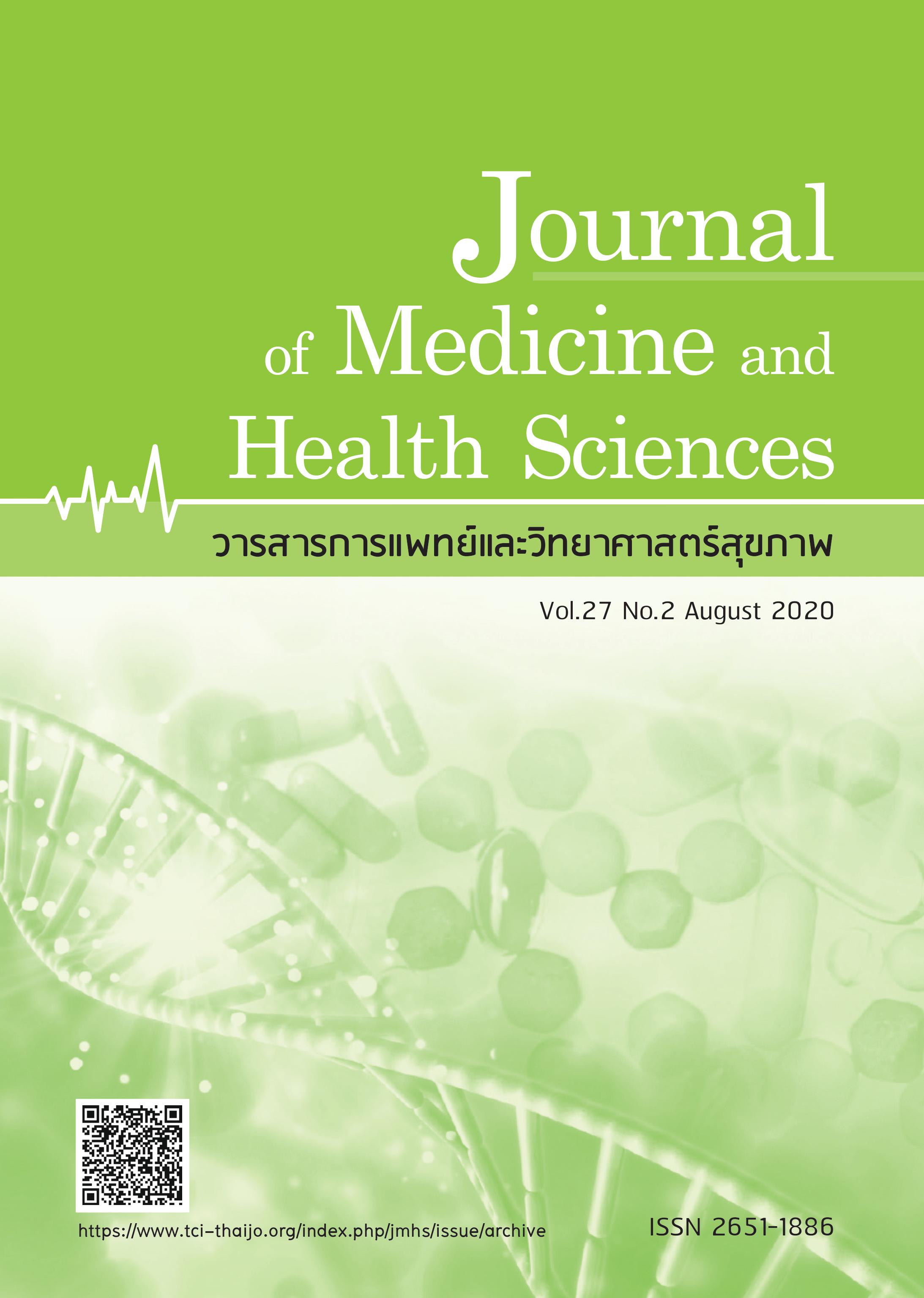Evaluation of 2D pelvic model created by mathematical methods
Keywords:
model, phantom, computed tomography image, pelvicAbstract
The mathematical model represents the human organ such as the urinary bladder,spine, intestine, and organs in the pelvic. This study aimed to evaluate the 2D pelvic model created using mathematical methods. Forty-seven computed tomography (CT) images underwent abdomen-pelvis (at level L3 spine to pubic symphysis) CT examination were simulated. The profile and intensity values of phantom images and reference images were evaluated by ImageJ. Visual inspection was assessed by three independent specialists at least 3 years of experience. The image processing including image filters, image segmentation, and image
reconstruction, were also examined. The results revealed that the profile graphs of pelvic phantom and referenced CT images were similar. The comparison of the intensity value of the muscle (p = 0.085) and the organ (p = 0.972) were not significantly different. The visual inspection score was moderate similarity equal to 1.68 (p = 0.015). In conclusion, the simulated phantoms can be processed by medical image processing algorithms and could be developed to use in further research works.
References
2. Shepp A, Logan BF. The fourier reconstruction of a head section. IEEE T Nucl Sci 1974;21:21-43.
3. Matlab. Create head phantom image. [Internet], [cited 2019 Feb 29]. Available from: http//:www.mathworks.com/help/images/ref/phantom.html.
4. ImageJ. ImageJ program. [Internet], [cited 2019 May 2]. Available from:https//:imagej.nih.gov/ij/.
5. Matlab. Add noise to image. [Internet],[cited 2019 Feb 29]. Available from: http//www.mathworks.com/help/images/ref/imnoise.html.
6. Matlab. Image filter. [Internet], [cited 2019 Feb 29]. Available from: https//www.math works.com/help/images/ref/imfilter.html.
7. Matlab. Global image threshold using Otsu’s method. [Internet], [cited 2019 Feb 29]. Available from: https//:www. mathworks.com/help/images/ref/graythresh.html.
8. Matlab. Multilevel thresholding. [Internet], [cited 2019 Feb 29]. Available from: https//:www.mathworks.com/help/ images/ref/grayslice.html.
9. Matlab. Concatenate arrays along specified dimension. [Internet], [cited 2019 Feb 29]. Available from: https//www.Mathworks.com/help/matlab/ref/cat.html.
10. Liang X, Zhang Z, Niu T, et al. Iterative image-domain ring artifact removal in cone-beam CT. Phys Med 2017;62:5276-92.
11. Li S, Quinto ET, Shiqiang W, et al.Simultaneous reconstruction and segmentation with the mumford-shah functional for electron tomography.Proceedings of IEEE Eng Med Biol Soc; 2016 August 16-20, Orlando, Florida,United States; 2016. p. 5909-12.
12. Singer A, Wu HT. Two-dimensional tomography from noisy projections takenat unknown random directions. Siam JImaging Sci 2013;6(1):136-75.
13. Kaewlek T, Koolpiruck D, ThongvigitmaneeS, et al. Metal artifact reduction and image quality evaluation of lumbar spine CT images using metal sinogram segmentation. J X-ray Sci Technol 2015;23(6):649-66.
14. Messali Z, Chetih N, Serir A, et al. A quantitative comparative study of back projection, filtered back projection, gradient and bayesian reconstruction algorithms in computed tomography (CT). IJPS 2015;4(1):12-31.
15. Pretorius PH, King MA, Tsui BM, et al. A mathematical model of motion of the heart for use in generating source and attenuation maps for simulating emission imaging. J Med Phys 1999;(11)26:2323-32.
16. Division of Medical Imaging Physics,Johns Hopkins Medical Institutions, USA. Medical Imaging Simulation Techniques and Computer Phantoms. [Internet],[cited 2019 June 3]. Available from: http//:dmip1.rad.jhmi.edu/xcat.



